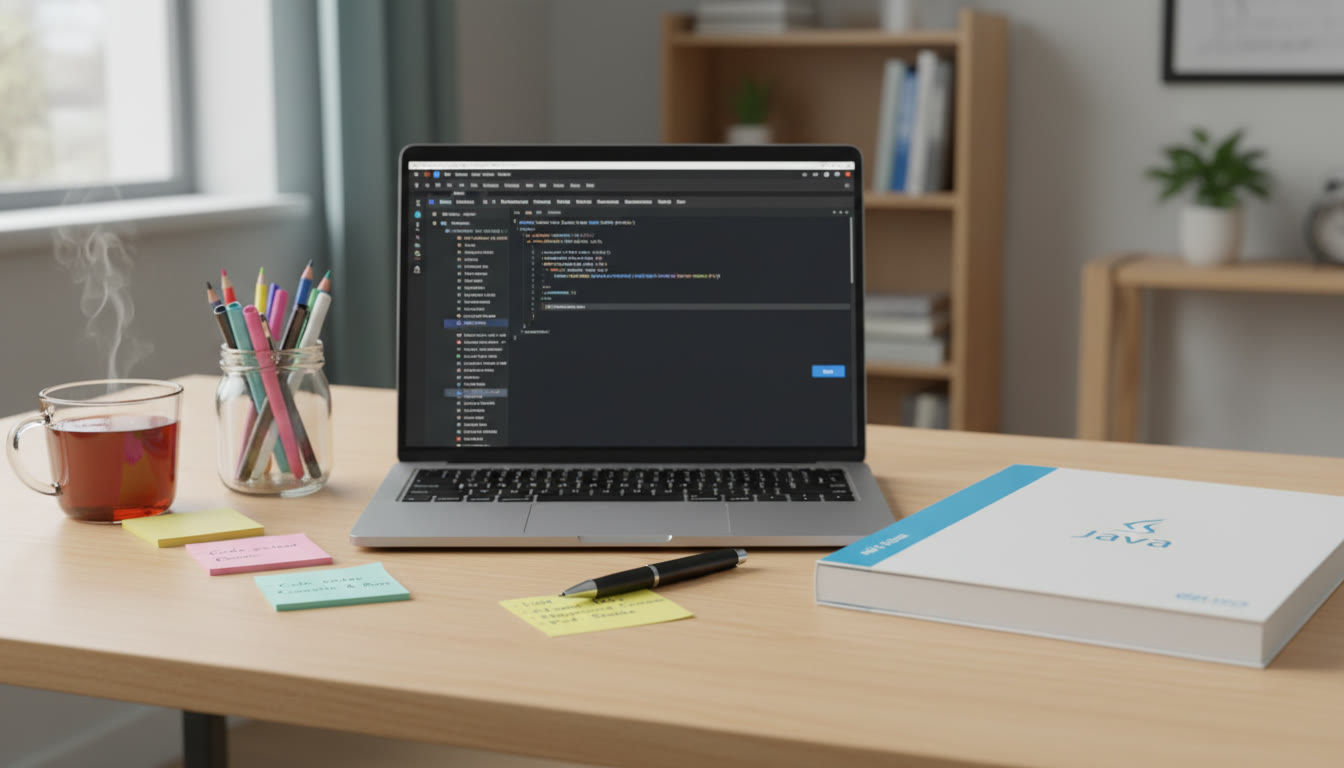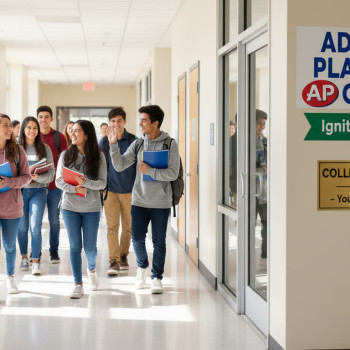Why compare IB CS and A Level CS with AP CSA/CSP?
Choosing the right computer science path can feel like standing at a busy intersection with multiple signposts pointing in different directions. For families navigating international curricula (IB or A Level) and the U.S.-centric AP system, the choices can be confusing. This guide is written for students and parents who want a clear, human-centered explanation of how IB Computer Science and A Level Computer Science line up with AP Computer Science A (CSA) and AP Computer Science Principles (CSP). We’ll unpack what each program emphasizes, how skills transfer between them, practical study strategies, and how personalized help—like Sparkl’s one-on-one tutoring and tailored study plans—can make the journey far smoother.
At a glance: core differences and common ground
Before we dive deep, here’s a snapshot comparison to set the scene. Think of this as the map you keep in your pocket while planning your next moves.
| Program | Focus | Typical Assessment | Programming Depth | Suitable For |
|---|---|---|---|---|
| IB Computer Science | Theory and practical projects; computational thinking; global perspective | Exams + Internal Assessment (programming project) | Moderate to deep (depends on SL/HL) | Students seeking broad international curriculum and research/project experience |
| A Level Computer Science | Core algorithms, data structures, systems, and deeper programming | Linear exams or coursework depending on syllabus (varies by exam board) | Deep (strong emphasis on programming and algorithmic thinking) | Students wanting rigorous CS fundamentals and UK university preparation |
| AP Computer Science A (CSA) | Object-oriented programming (Java), data structures, algorithms | Single AP Exam (multiple-choice + free-response) | Deep in Java and algorithmic problem solving | Students wanting a focused programming course and potential university credit |
| AP Computer Science Principles (CSP) | Broad computing concepts: impact, data, Internet, programming basics | AP Exam + Create Performance Task (exploratory project) | Introductory programming and computational thinking | Students exploring CS big ideas or complementing CSA |
What these programs share
- Emphasis on computational thinking and problem solving.
- Mix of theory and practice—though the balance varies.
- Project or task components that reward creativity, design, and real-world thinking.
- Preparation for further study in computer science, engineering, data science, and related fields.

Deep dive: What each course emphasizes (so you can match goals to curriculum)
IB Computer Science (SL and HL)
IB CS blends conceptual understanding with a strong project focus. Students explore computational thinking, system design, and social/ethical impacts of computing. At Higher Level (HL) students go further into complexity and algorithmic depth compared with Standard Level (SL).
- Internal Assessment (IA): a student-designed program or computational solution that demonstrates design, development, and evaluation skills.
- IB encourages reflection on societal implications—so essays and structured evaluations are common.
- Programming languages used vary by school; the skills are transferable rather than language-specific.
A Level Computer Science
A Level CS is rigorous on theory and practical programming. It asks students to demonstrate strong algorithmic thinking, complexity analysis, and systems knowledge.
- Strong emphasis on formal problem solving, pseudocode, and translating that into working programs.
- Depth in data structures, algorithms, and low-level concepts (often including how hardware and software interact).
- Assessment tends to be exam-heavy with some coursework depending on the exam board; students must be comfortable with timed exams and written algorithmic exposition.
AP Computer Science A (CSA)
AP CSA is essentially an introductory college-level course in object-oriented programming, most commonly taught in Java. It focuses on arrays, lists, searching, sorting, recursion, and basic data structures, with students solving algorithmic problems under exam conditions.
- Programming skills are assessed via free-response problems that require writing short programs or methods.
- Great for students who want a solid, practical programming foundation that aligns with many U.S. college expectations.
- Strong performance on CSA can sometimes translate into college credit or advanced placement.
AP Computer Science Principles (CSP)
CSP is broader and more accessible, focusing on the foundational ideas behind computing, the societal impacts of technology, data and information, and a performance task where students create a computational artifact and report on it.
- The Create Performance Task encourages project-based learning and documentation—skills very compatible with IB’s IA ethos.
- CSP is ideal for students who want context and breadth and may not be ready to dive straight into heavy programming.
- CSP complements CSA well: CSP teaches the ‘why’ and ‘how computing shapes the world,’ while CSA teaches the ‘how to code it.’
Mapping skills across systems: how one prepares you for the other
Families often ask: “If my child studies IB CS, will they be ready for AP CSA?” The short answer is: generally yes, but with some targeted gaps to fill. Here’s a practical mapping of common skills and where students might need extra focus.
| Skill / Topic | Strong in IB / A Level | Strong in AP CSA | Strong in AP CSP |
|---|---|---|---|
| Algorithmic thinking | Yes (emphasized) | Yes (central) | Yes (conceptual) |
| Object-oriented programming (Java) | Varies (language-neutral focus) | Yes (core) | Some (basic) |
| Project-based development | Yes (IA project) | Less emphasis (exam focus) | Yes (Create task) |
| Theory and ethical reflection | Yes (strong) | Moderate (specific to computation) | Yes (strong focus) |
| Exam technique under timed conditions | Yes (exam component) | High (single exam) | Moderate (exam + performance task) |
Practical crosswalks (how to convert strengths into readiness)
- If you’re coming from IB or A Level and aiming at AP CSA: focus on Java syntax, practice timed coding problems, and get comfortable with AP-style free-response solutions.
- If you’re coming from AP CSA and want to thrive in IB: strengthen written analysis skills, project documentation, and the broader ethical and systems perspectives IB favors.
- If you’re doing CSP alongside IB: your project documentation and understanding of societal impacts will transfer nicely—just make sure any programming artifacts meet the AP Create task rubric.
Study strategy: a one-year practical plan
Whether you’re a student juggling multiple curricula or a parent trying to keep track, a realistic, flexible plan works best. Below is a semester-by-semester structure for a student who wants to bridge IB/A Level with AP CSA/CSP over an academic year.
Semester 1: Foundations and alignment (Months 1–4)
- Map the syllabus: list topics that overlap (algorithms, data representation) and identify gaps (Java-specific features if targeting CSA).
- Start weekly hands-on coding: small programs that build to bigger problems; emphasis on clean functions and testing.
- For IB/A Level students: begin practicing AP-style free-response problems in short bursts (30–45 minutes).
- For AP students: add one written assignment per month that mirrors IB-style analysis—explain design choices, societal impacts, and testing strategies.
Semester 2: Project work and exam practice (Months 5–9)
- Begin a capstone project (small but complete): plan, prototype, test, and document. This double-dips as IB IA or AP Create preparation.
- Ramp up timed practice: full AP-style exams or past-paper A Level/IB questions under exam conditions.
- Hold monthly review sessions: analyze mistakes, rewrite flawed code, and polish write-ups.
- Consider targeted tutoring sessions for tricky areas like recursion, object-oriented design, or formal proofs.
Final stretch: polish and confidence (Months 10–12)
- Complete and finalize project documentation—this often gains high marks if done with clarity and reflection.
- Simulate exam days: do 2–3 full exams spaced like the real tests. Review deeply after each one.
- Fine-tune time management, formula sheets, and common code patterns (e.g., traversal, sorting templates).
Assessment tips: getting the marks where they count
Exams across these systems reward clarity, structure, and demonstration of understanding—not just the right answer.
- Write clean pseudocode first when tackling algorithm questions—explain your approach with concise comments.
- For programming answers, prioritize correctness and clarity. Well-documented, readable code often scores better than clever but opaque solutions.
- For projects (IB IA, AP Create): record your design decisions, testing logs, and reflections on limitations and improvements.
- Practice incremental development—submit working parts rather than late, unfinished monoliths.
How parents can support without taking over
Parental support is hugely valuable when it’s practical and measured.
- Create a stable study routine with predictable blocks of focused time.
- Encourage regular reflection: ask students to explain a concept to you—teaching is the fastest way to learn.
- Invest in targeted help when needed—short, focused tutoring can unblock months of slow progress. Personalized services like Sparkl’s offer 1-on-1 guidance, tailored study plans, and AI-driven insights that can help convert weak spots into strengths.
- Celebrate small wins (a clean program, a good practice exam score) to keep motivation high.
Common student pitfalls and how to avoid them
Here are predictable stumbling blocks and actionable ways to avoid them:
- Over-reliance on one language or resource: diversify practice problems and learn to read and write pseudocode.
- Ignoring documentation and reflection: projects without clear write-ups lose easy marks—document each step.
- Poor exam timing: practice under timed conditions and build templates for common tasks (e.g., file I/O, list traversal).
- Not testing early and often: unit tests catch errors fast and build confidence.
Sample weekly study plan (practical and balanced)
This plan assumes around 8–10 hours per week dedicated to CS study—adjust up or down depending on goals.
| Day | Focus | Time |
|---|---|---|
| Monday | Concept review + flashcards (theory, definitions) | 45–60 minutes |
| Wednesday | Practice coding problems (CSA-style) | 90 minutes |
| Friday | Project work / IA or Create task | 90 minutes |
| Weekend | Mock exam or timed free-response; review mistakes | 2–3 hours |
Real-world examples: two student journeys
Priya: IB HL student aiming for AP CSA
Priya was strong in systems thinking and completed an excellent IB IA project, but she had limited Java experience. Her plan included targeted Java tutoring, weekly timed practice modeled on AP free-response questions, and translating IB pseudocode into Java. Within six months she was comfortable with AP-style problems and used her IA reflections to strengthen her programming documentation and testing approach.
Owen: A Level student exploring AP CSP
Owen loved low-level concepts and algorithms but wanted to show breadth on his college applications. He took AP CSP to demonstrate interdisciplinary thinking—completing the Create task with a data-visualization project that connected computing to social impact. His A Level rigor made the technical parts solid; CSP helped him frame the societal story and produce excellent documentation.
When to consider tutoring or extra support
Not everyone needs tutoring, but the right help at the right time multiplies results. Consider 1-on-1 tutoring if:
- Your student is consistently stuck on a core topic (e.g., recursion, object orientation).
- Time is short and you want structured, efficient practice before an exam.
- You want personalized feedback on projects and writing—areas where generic resources fall short.
Personalized tutoring—such as Sparkl’s tailored 1-on-1 sessions and study plans—can provide focused problem diagnosis, weekly accountability, and AI-driven insights that highlight the highest-impact areas to study. When fit naturally into a plan, tutoring transforms slow, scattershot studying into targeted progress.
Preparing for university: alignment and credit
Many universities recognize AP CSA and sometimes award credit or placement for strong scores. IB and A Level results are viewed in context—IB HL and strong A Level results are highly respected. If your child aims to study CS at university, focus on building both programming competence and strong mathematical reasoning; admissions officers look for evidence of both depth (algorithms, coding) and breadth (projects, ethical understanding, system-level thinking).
Final checklist before test day or project submission
- Code compiles and is well-commented; include sample input and output where relevant.
- Project documentation includes purpose, design choices, testing, limitations, and future improvements.
- Practice exam scripts completed under timed conditions within the last 2–3 weeks.
- One trusted tutor or mentor has reviewed your final project and practice exam essays.

Parting thoughts: study smart, not just hard
Bridging IB CS or A Level CS with AP CSA and AP CSP is perfectly doable and often advantageous. IB and A Level courses give strong theoretical foundations and project experience; AP CSA offers a focused programming pathway, while AP CSP brings context and creative project practice. Together, they form a complementary toolkit for students heading into higher education or tech careers.
Remember: clear planning, steady practice, and targeted feedback are the three pillars of success. If your family needs tailored help, short focused tutoring sessions—like those offered by Sparkl’s personalized tutors—can provide the boost that turns confusion into clarity and effort into results. Above all, keep learning enjoyable: celebrate small wins, iterate on projects, and let curiosity lead the way.
Next steps
Start by listing the topics your student knows well and the top three areas they find intimidating. Build a 12-week plan that alternates focused coding practice with project development and scheduled review. If you’re unsure where to begin, consider a short diagnostic session to identify the highest-impact skills to practice—targeted investment now saves months of stress later.
Good luck—and enjoy the process. Computer science is not only a pathway to a career; it’s a way of seeing problems creatively and turning ideas into real tools.
















No Comments
Leave a comment Cancel